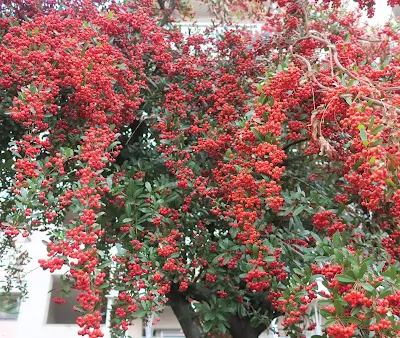英語の後に日本語が続きます。
The winter cherry (Cerasus x parvifolia 'Fuyu-zakura') is a crossbreed of Cerasus incisa and Cerasus speciosa. The cherry differs from other cherry trees in its time of blossoming. The winter cherry blossoms twice a year, in early April and in winter (from October to December), because of which the cherry tree is called "winter cherry" in Japan.
It has another name "koba zakura," which translates into "small leaf cherry" for its relatively smaller leaves. The winter cherry blossoms are less gorgeous but stay longer than other cherry blossoms, which generally fall in two weeks.
Some say when passing by a winter cherry tree that it's silly, blooming out of season but at such times I always say in my mind "It's you who are silly😝."
 |
| 2021/11/25 |
 |
| 2022/12/9 |

































